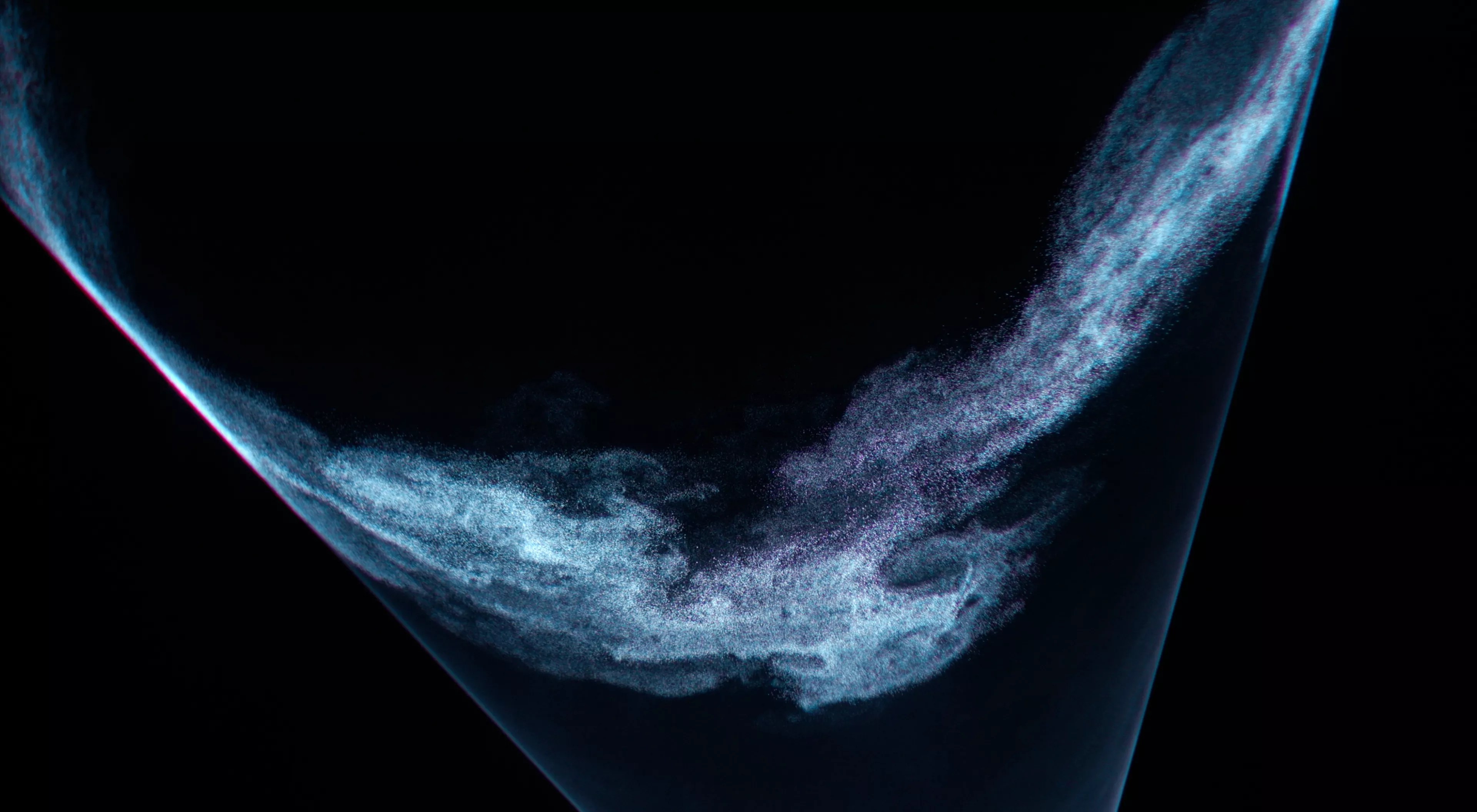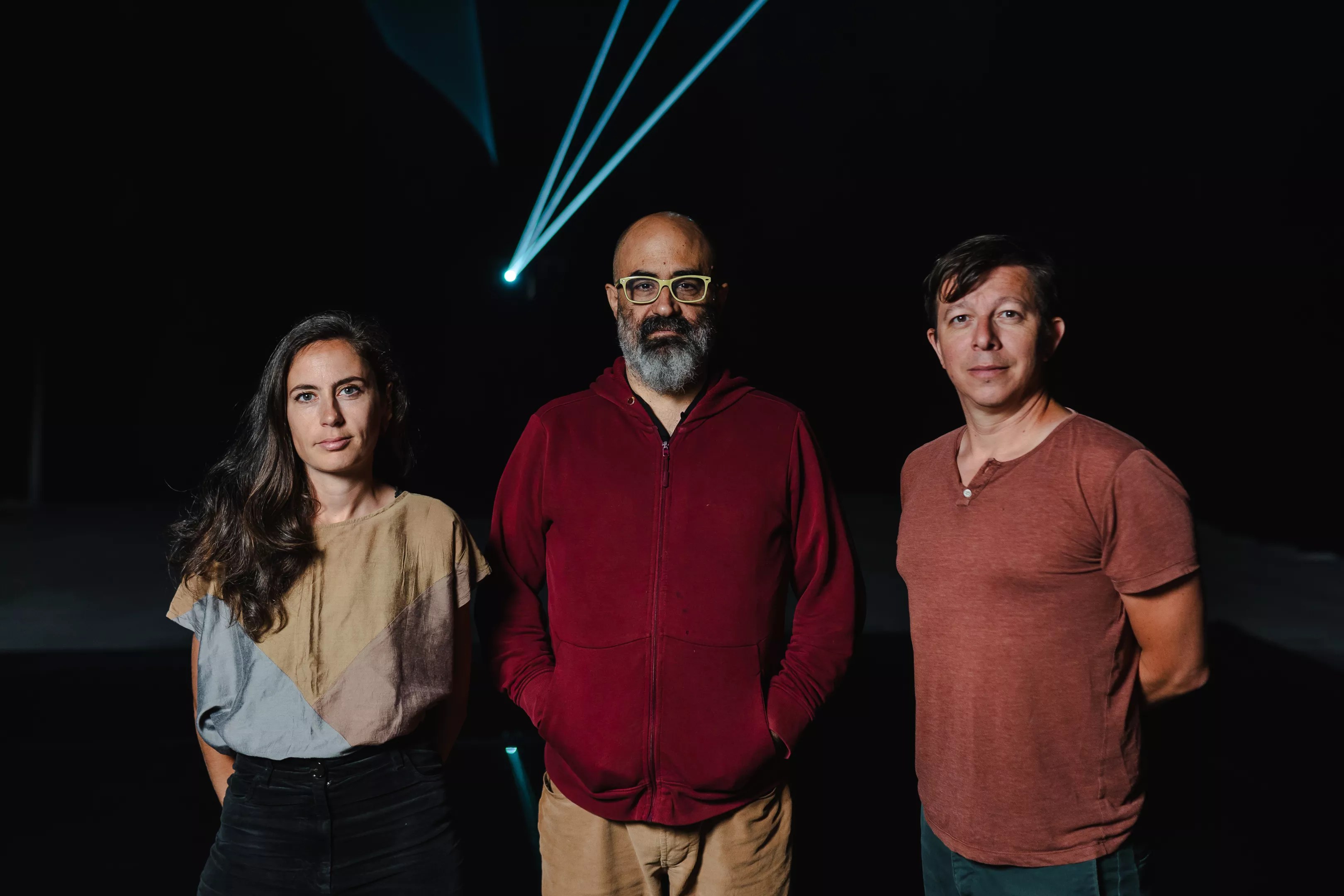
Photo courtesy of Superblue, ©Mind The Film

Audio By Carbonatix
Immersive takes on a whole new meaning with Lightfall, Superblue Miami‘s latest exhibition. Created by Brussels-based Joanie Lemericer and Juliette Bibasse, better known as Studio Lemercier, the installation marks a new evolution for the artists and the museum as they embrace nature as a medium and muse.
If the duo’s work doesn’t ring a bell, the four walls surrounding Lightfall might be throwing you off. Studio Lemercier is notorious for creating computer-generated natural landscapes meant to be projected in the outdoor spaces of music festivals across Western Europe and South America.
That’s why the duo’s departure from their portfolio – confining themselves to the dimensions of a room and trading code for elements like air, water, and light – is as impressive and successful as Lightfall itself, which contradictorily tries to re-create the ephemerality of light catching the water.
“For many, many years I was trying to capture nature and re-create an experience with technology. For example, I would do a 3D scan of a forest and create these enormous amounts of data, and in the process, I was losing the thing I wanted to capture. In the end, it looked very dry and technological,” says Lemercier, artist and co-director of the studio. “Over the years, we tried to shift our approach. We still love technology and use it a lot, but what we’re trying to do with many of our projects is instead of faking nature, we are trying to show how beautiful real, physical things are.”
The core of Lightfall, projecting in midair using near-invisible water particles, was conceptualized by the artist duo as early as 2017 when they first opened the doors of their studio space in Brussels. With the extra square footage, they were able to experiment with different methods of spraying and atomizing water.
“It took me two or three years, but I tried everything from fire hoses to water sprinklers and gardening devices,” Lemercier explains. “Year after year, I refined my understanding of how the light would reach with the water.”

Juliette Bibasse (left), Murcof, and Joanie Lemercier
Photo courtesy of Superblue, ©David Jacowbski.
Once the water atomization prototype used in Lightfall was created, it didn’t take long for Superblue to reach out to the artist duo in 2020. While the museum was strict about housing the laser-centric installation in a tall room due to safety concerns, Studio Lemercier was given a surprising amount of creative freedom with virtually every other element.
“We’ve done very few commissions because we’re very lucky to be very free in what we do and have opportunities to create true carte blanche projects,” says Bibasse, independent curator and co-director of the studio. “If you compare it to the very few commissions we’ve done in the past year, Superblue is really the one where we felt we were on their team. It’s been a big motivation to see their support, investment, and full confidence.”
As promised by the opening curatorial statement, Lightfall is felt (and heard) before it’s seen. Before rounding the corner that sets off the installation from the four that precede it, its soundtrack, ambient electronic tunes by Mexican musician Murcof, catches you with its deep, resonant notes that channel rushing winds and tossed waves as much as they do human breath.
Upon entering, the first thing you’ll notice is that the laser show taking place just feet above your head is the only source of light in the pitch-black room and that your sense of touch is instantly heightened by the thin mist seemingly seeping from every corner. Most viewers tend to crowd around the installation’s perimeter, but to experience it as intended, commit to the “splash zone” and plant yourself in the middle of the room.
When looking up, you’ll see projected linear light designs meshing with a fine mist falling from above to capture the invisible abstractions hidden in the water with vibrant reds, blues, and purples. Panning up and down, these designs, coupled with the surround-sound nature score, captivate and envelop you for Lightfall‘s roughly ten-minute cycle in a transcendental manner similar to that of a UFO abduction.

“What we’re trying to do with many of our projects is instead of faking nature, we are trying to show how beautiful real, physical things are,” says Joanie Lemercier.
Photo courtesy of Superblue, ©David Jacowbski.
Despite the exhibition’s otherworldly qualities, Studio Lemercier’s objective for the piece is grounded in ecological awareness. The artist duo strives to highlight how technology can be conscious of environmental issues and prioritize green artmaking methods in all of their work, and Lightfall bears no exception.
“In a project like Lightfall, we put a lot of effort into minimizing the quantity of water that’s being used,” said Bibasse. “It’s very important for us to reject the ‘purity test’ in environmental activism, like, if you have a smartphone, you can’t be an activist. For us, it’s about not buying new computers that aren’t necessary, using low-energy projectors. It’s a matter of balance.”
Unlike most environmentally conscious art initiatives, Studio Lemercier extends its commitment to being green past the work itself and into all steps of the artmaking process. For Lightfall, the duo opted for energy-efficient laser projectors that use ten times less power than a regular video projector and offset carbon emissions by forgoing plane travel for the exhibition’s setup and opening.
“Our approach is to understand our impact [on the environment] really honestly and in a really sincere way,” Lemercier says.
“Lightfall.” On view at Superblue Miami, 1101 NW 23rd St., Miami; 786-697-3405; superblue.com. Monday through Thursday 11 a.m. to 7 p.m., Friday and Saturday 10 a.m. to 8 p.m., and Sunday 10 a.m. to 7 p.m.